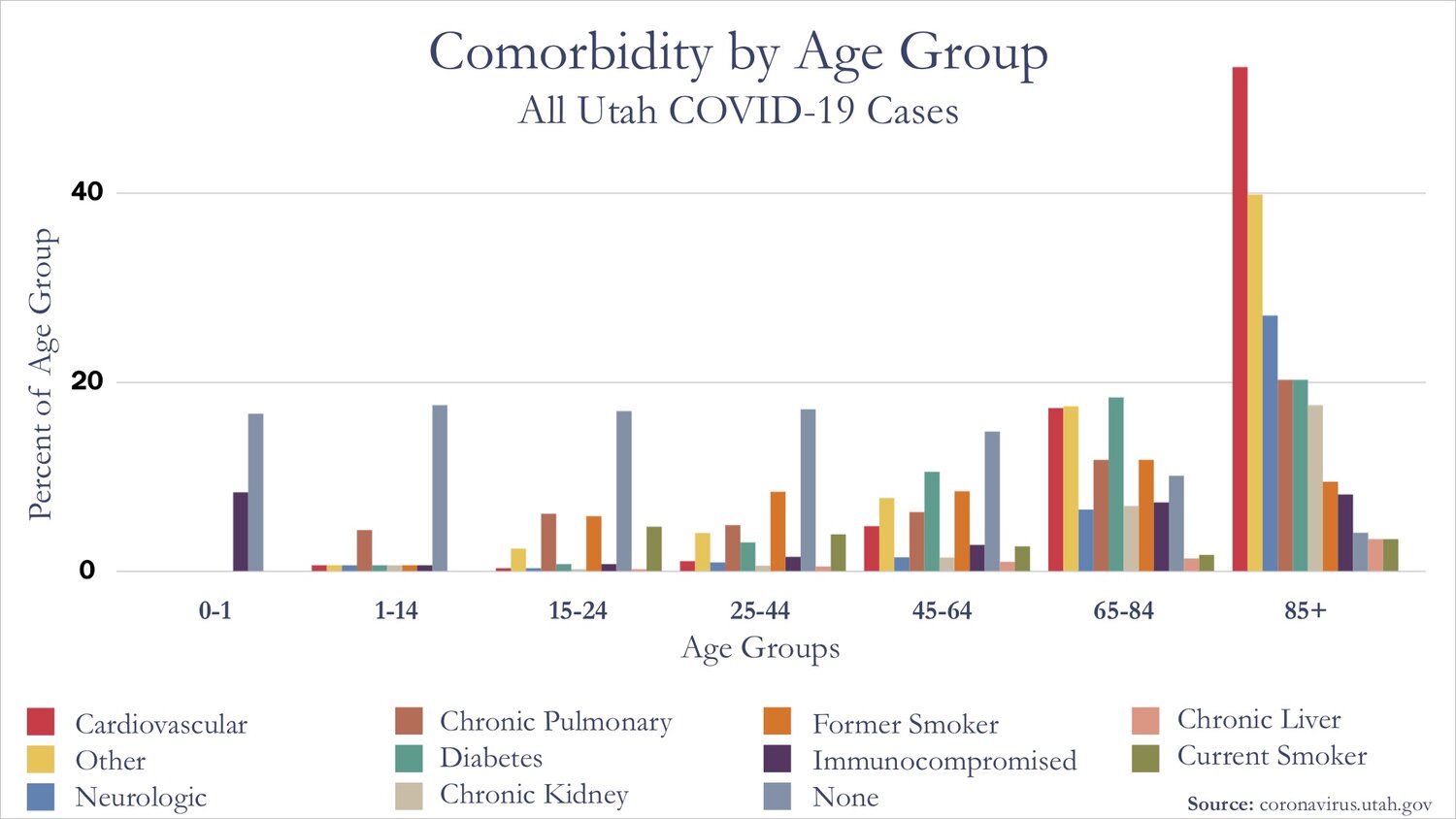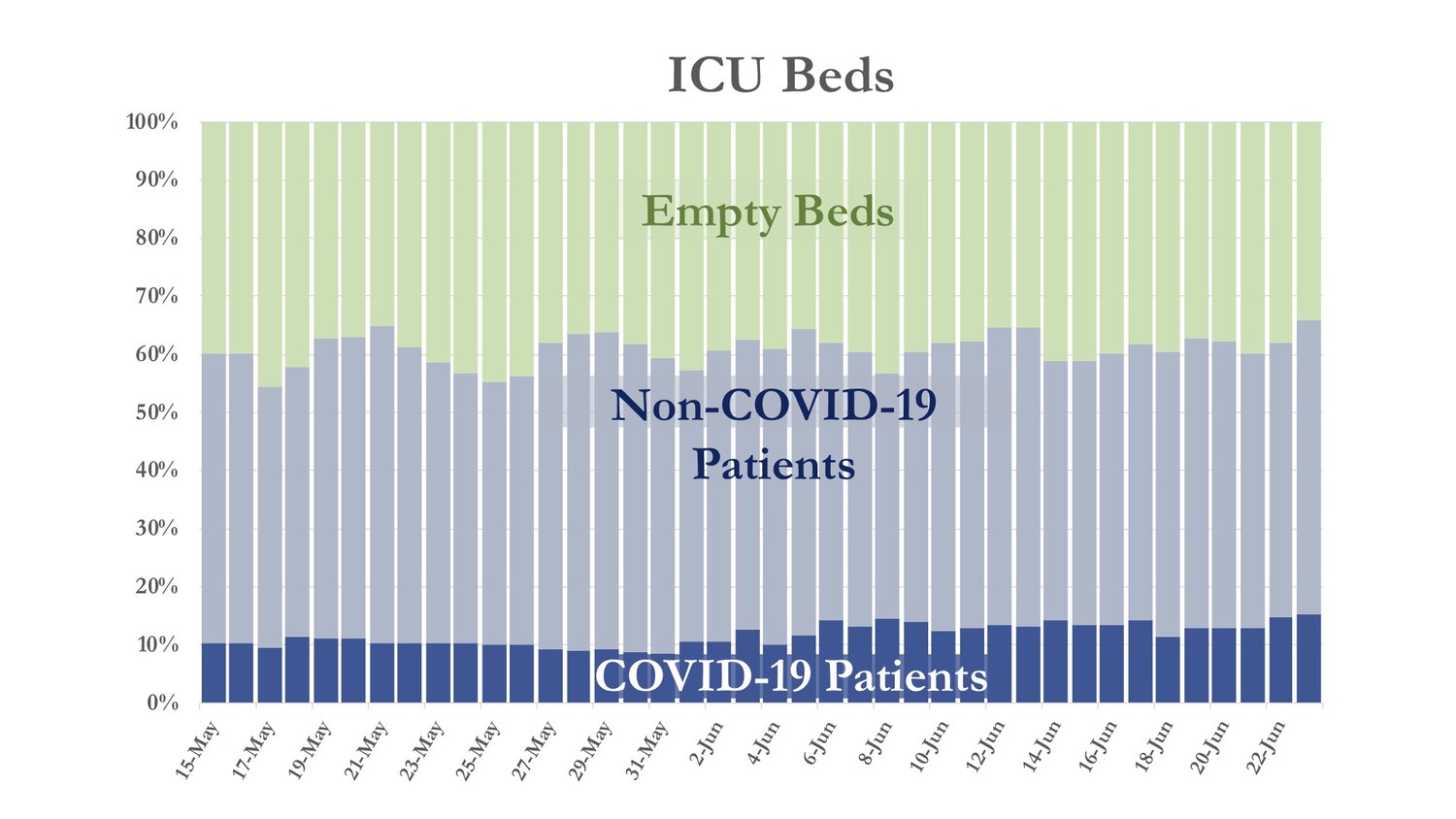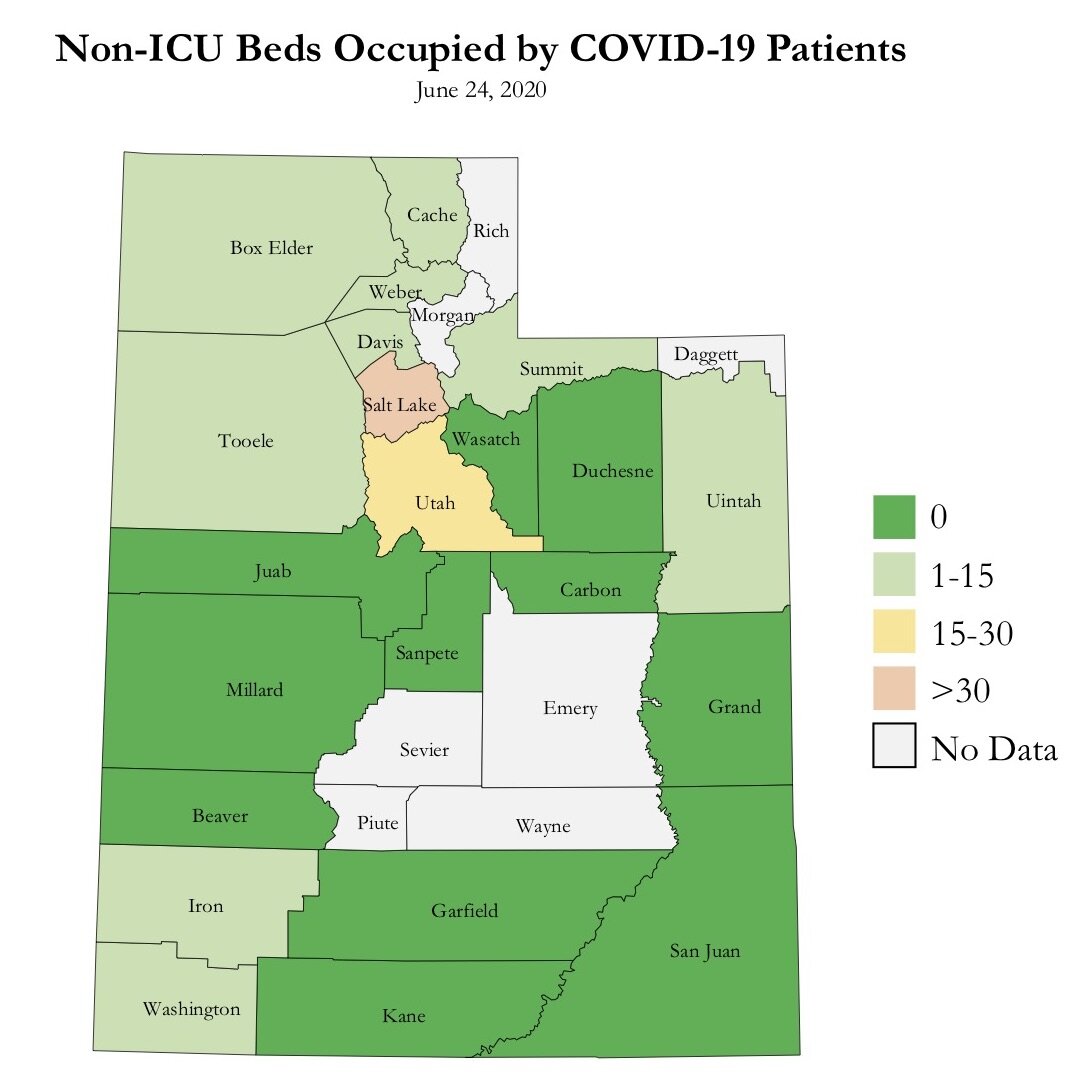Over the last few weeks, the state has seen an increase in COVID-19 cases, which is concerning. However, hospitalizations are a much better indicator of the risk to our healthcare system and have remained relatively stable for several days.
Currently, those testing positive for COVID-19 are mostly occurring in younger populations, which are less likely to result in hospitalization. Of those individuals who contract COVID-19, 99 percent will recover, with 92.5 percent recovering at home. It is imperative that all Utahns follow health guidelines by maintaining physical distance in public and wearing face coverings. These simple actions can protect those who are most vulnerable to COVID-19.
Of the 163 COVID-19 fatalities in Utah:
-
Utah mortality rate: 0.9 percent, down from 1.0 percent and the lowest in the nation
-
U.S. mortality rate 5.3 percent
-
Global mortality rate: 5.2 percent
-
-
Median age for fatality: 73
-
Percent of fatalities with comorbidity: 81 percent
-
Percent of fatalities with comorbidity and/or 65 plus: 93.4 percent
-
Percent of fatalities that were long-term-care facility residents: 43 percent
While the state is concerned with the health effects of COVID-19, we must balance our response, so the solution does not become worse than the disease. The economic impacts alone forced 105,000 Utahns out of work and required the state to cut $840 million from its budget.
During the stay at home initiative, mortality rates rose among non-COVID-19 patients, which could be because many delayed receiving needed preventative care. Mental health issues have increased as well as issues among those with disabilities. Additionally, Utah has received startlingly low reports of child abuse, worrying many that reports are not being made due to increased isolation for children and limited contact with adults outside the home. A complete shutdown is not a responsible alternative. While there are still many unknowns, we now know more than we did a few months ago and can overcome this virus together. If we follow CDC guidelines and make sure we follow precautions, Utah can stay safe and stay open. Phased Approach Utah’s unique landscape requires a multifaceted approach to overcoming the health crisis and ensuring individuals and businesses are protected. A one size fits all approach doesn’t work in this state. For example, as of June 25, Southeast Utah has had zero hospitalizations for COVID-19 and Central Utah has had eight. Due to low COVID-19 cases, these areas are better suited to fully open while still following health guidelines. Key Data Points The key data points the state is watching include hospital utilization rates, the transmission rate, rate of community spread and high-risk populations. Health experts, economic advisors and elected officials are reviewing key factors to make data-driven recommendations to protect the vulnerable population and allow the state to continue to transition health risk phases and stay open. Included below is updated information regarding the three key data factors. Hospital Utilization Rate As of June 23, ICU beds occupied by COVID-19 patients in Utah have averaged 13 percent of total capacity for the last 23 days. Hospital bed utilization is a primary indicator of the strain on the state’s healthcare capacity. The graph below shows Utah’s ICU capacity from May 14 through June 23.
The graph below shows non-ICU beds occupied by COVID-19 patients in Utah.

Transmission Rate and Community Spread
A transmission rate at or near 1:1 for 7-14 consecutive days indicates an adequate level of stability. As of June 24, the transmission rate in Utah was 1.3 and has averaged 1.2 since June 1. As of June 21, the spread of COVID-19 from known sources has been at 82 percent or greater for the past five weeks. The majority of known spread (60.1 percent) is from household members. Spread from known contacts above 60 percent is an indicator of stability and low levels of community spread. Of those tested for COVID-19, only about 9-10 percent are currently testing positive. The graph below shows the number of COVID-19’s positive and negative tests from May 14 to June 23.
Lower Restriction Phase
The state is using data to help drive decisions on when parts of Utah can move to a lower restriction level of the Utah Leads Together 4.0 plan. Green is a lighter restriction level, it does not mean business as usual. Though the state is transitioning to different phases, Utahns still need to take precautions, including physical distancing and wearing a face-covering in public to protect high-risk populations, washing hands often and staying home when ill. Utahns and Utah businesses disrupted their lives and livelihoods to slow the COVID-19 spread in order to avoid hospitals becoming overwhelmed. The state has been successful in this effort as hospital capacity has remained stable. As the state continues to transition phases, those in the high-risk categories should continue to take precautions and exercise all possible caution. While cases will likely increase, though, as long as Utah hospitals remain stable, together, we can continue to protect the vulnerable and keep our economy open while transitioning. As of June 25 at 1:00 p.m. Utah’s private and public laboratories have administered 312,054 tests with 19,374 testing positive. There are currently 170 people hospitalized with COVID-19. There have been 164 fatalities, with an estimated 10,642 recovered. Additional information can be found here. Additional Updates:-
The Public Health and Economic Emergency Commission unanimously recommended the governor designate a portion of the $1 million allocated to the COVID-19 Outreach and Education Program during the June 2020 special session to directly emphasize the importance of wearing masks. Read more here.
-
The Utah Hospital Association, in collaboration with Utah’s four largest healthcare systems, are joining together in a collaborative effort to encourage the use of face masks in public and work settings throughout the state with the #MaskUpUtah campaign. More information here.
-
On June 19, nine rural counties’ requests to transition from yellow (low) restriction status to green (new normal health restriction status), including Beaver, Daggett, Duchesne, Emery, Garfield, Millard, Piute, Uintah and Wayne were approved. Read more here.
-
The state released COVID-19 polling guidance to keep Utahns safe when voting. Read the guidance here.
-
Anyone in Utah experiencing the following flu-like symptoms should get tested for COVID-19: fever, cough, shortness of breath, sore throat, muscle aches and chills, or decreased sense of smell or taste. To find a testing location near you, click here.
-
During the 2020 legislative session, we passed S.B. 111, Higher Education Amendments, which merged the Utah System of Higher Education and the Utah System of Technical Colleges into one system. For those who have questions about this change, more information and FAQ can be found here.